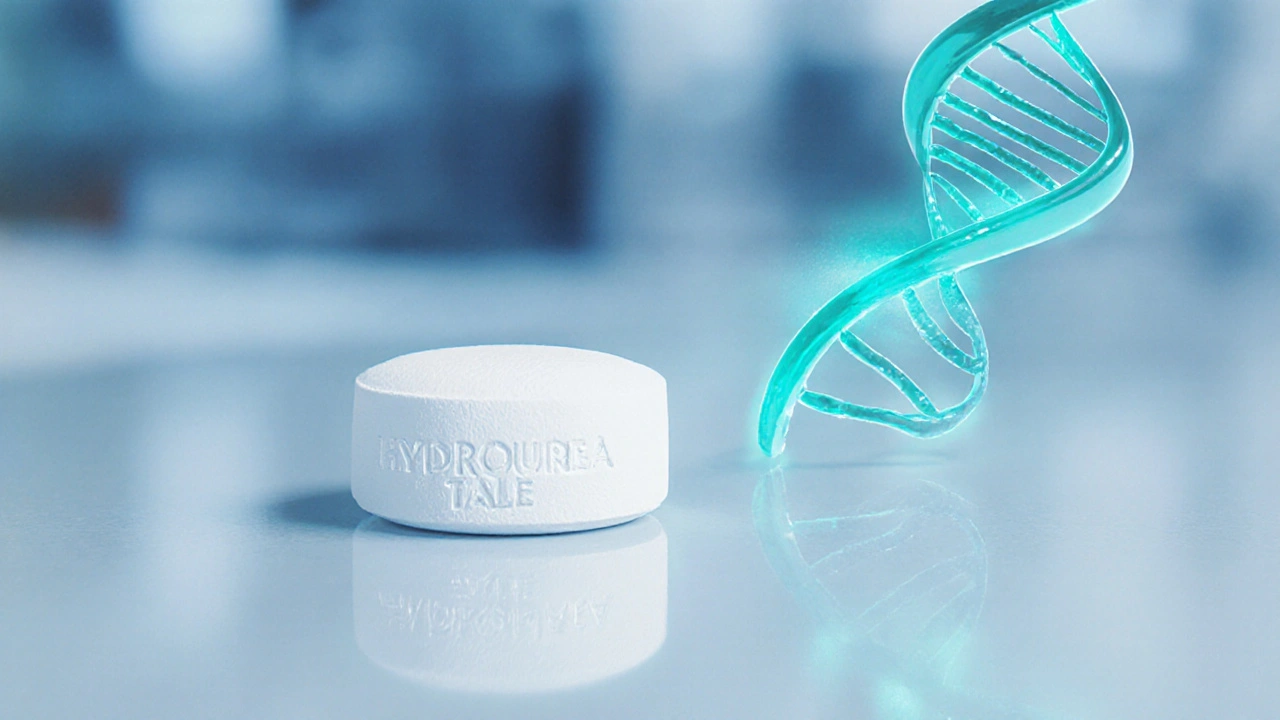Hydroxyurea: Uses, Dosing, and Safety
When working with Hydroxyurea, a ribonucleotide reductase inhibitor prescribed for several blood disorders. Also known as hydroxycarbamide, it helps control abnormal cell growth and reduces disease complications.
One of the biggest reasons patients and doctors talk about Hydroxyurea is its impact on Sickle Cell Disease, a genetic condition that causes misshapen red blood cells. The drug raises Fetal Hemoglobin, a form of hemoglobin that does not sickle, which in turn cuts down painful crises. In short, Hydroxyurea reduces the frequency of vaso‑occlusive episodes in sickle cell patients.
Beyond sickle cell, Hydroxyurea is a cornerstone treatment for Myeloproliferative Neoplasms, a group of disorders where bone marrow makes too many blood cells. It lowers elevated platelet counts and controls white‑cell proliferation, helping prevent thrombosis and splenomegaly. The drug’s ability to slow down abnormal cell division makes it valuable across these conditions.
Key Dosing and Monitoring Tips
Dosage depends on the condition, body weight, and kidney function. For sickle cell disease, adults often start at 15 mg/kg daily and adjust based on blood counts. In myeloproliferative settings, the dose may be higher, but the principle stays the same: aim for a target blood count while avoiding toxicity. Regular laboratory checks—complete blood count, renal panels, and liver enzymes—are mandatory. This monitoring loop ensures the drug stays effective without causing severe cytopenias.
Patients should also be aware of common side effects. Mild nausea, skin rash, and temporary hair thinning happen in many users. More serious concerns include severe neutropenia or kidney injury, which is why doctors schedule monthly labs during the first few months. If any symptom feels out of the ordinary, contacting a healthcare professional promptly can prevent complications.
Hydroxyurea interacts with a few other medications, especially those that also affect bone‑marrow function. Antiretroviral drugs, certain antibiotics, and chemotherapy agents can amplify blood‑cell suppression. Discussing all current medicines with the prescribing clinician is essential to avoid unintended interactions.
Pregnancy and breastfeeding raise special questions. The drug is classified as Pregnancy Category D, meaning risks exist for the fetus. Women of child‑bearing age should use reliable contraception while on Hydroxyurea and discuss any plans for pregnancy with their doctor well before trying to conceive.
Overall, Hydroxyurea offers a blend of effectiveness and convenience for chronic blood‑disorder management. The articles below dive deeper into specific comparisons, safety profiles, and real‑world experiences, giving you a full picture of how this medication fits into various treatment plans.
Hydroxyurea vs Alternatives: Which Drug Fits Your Treatment Needs?
A clear comparison of Hydroxyurea with its main alternatives for sickle‑cell disease and CML, covering efficacy, side‑effects, cost and how to choose the right option.





